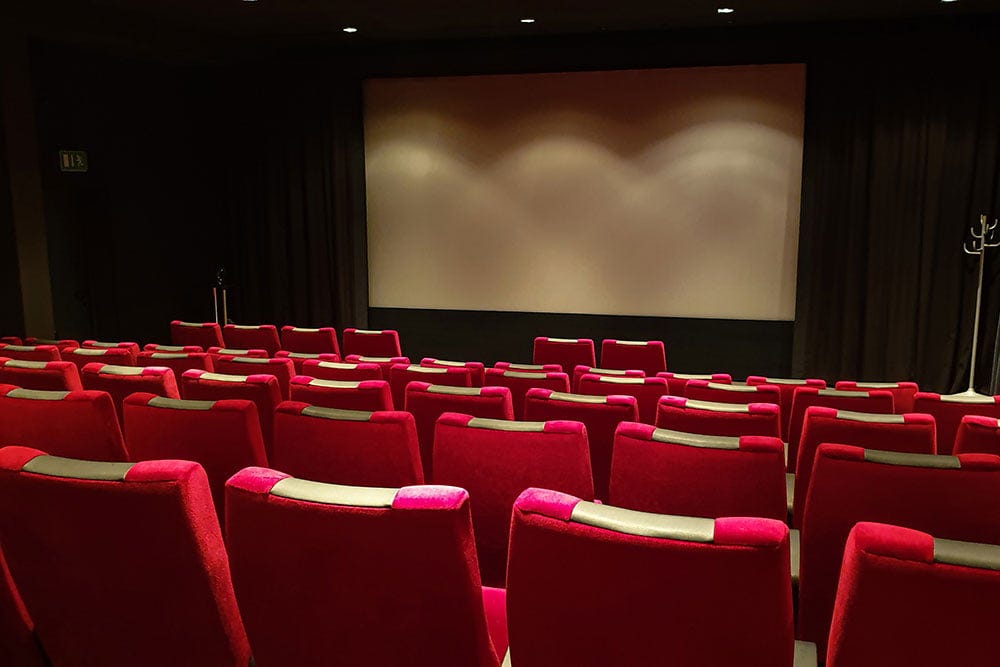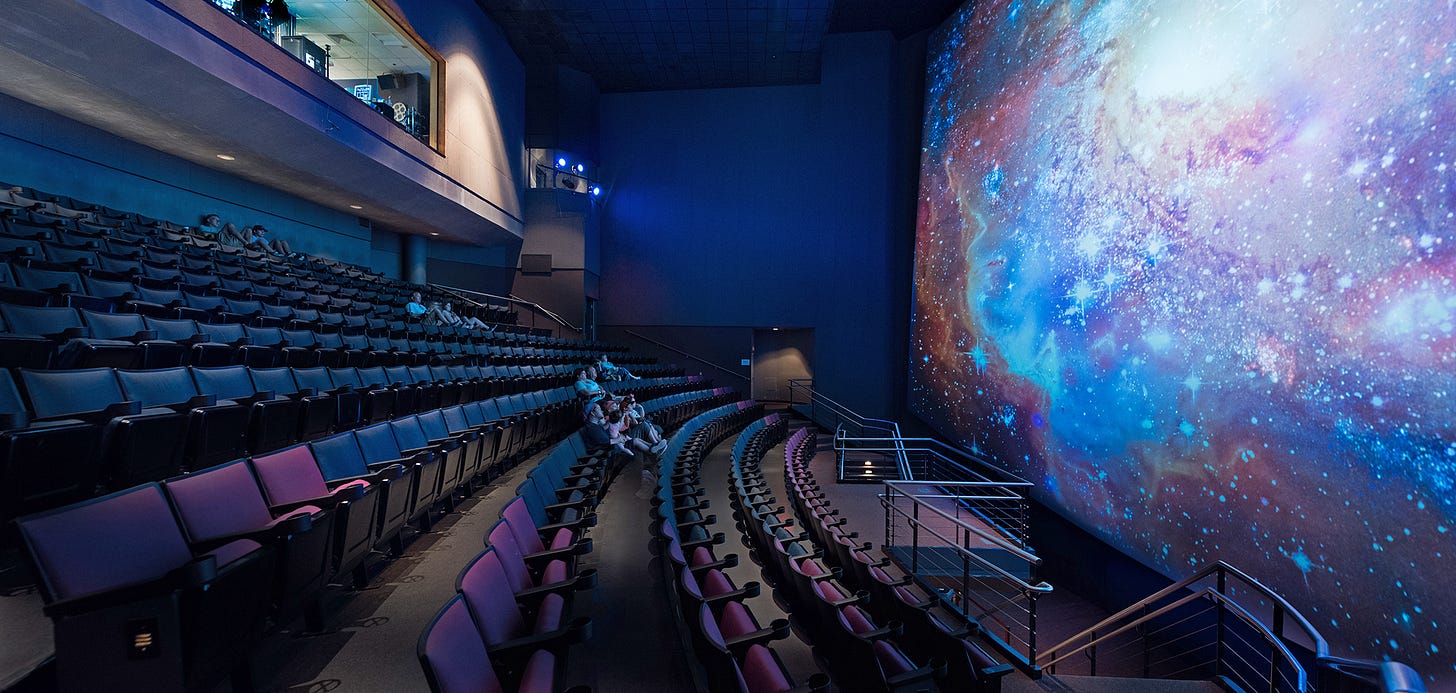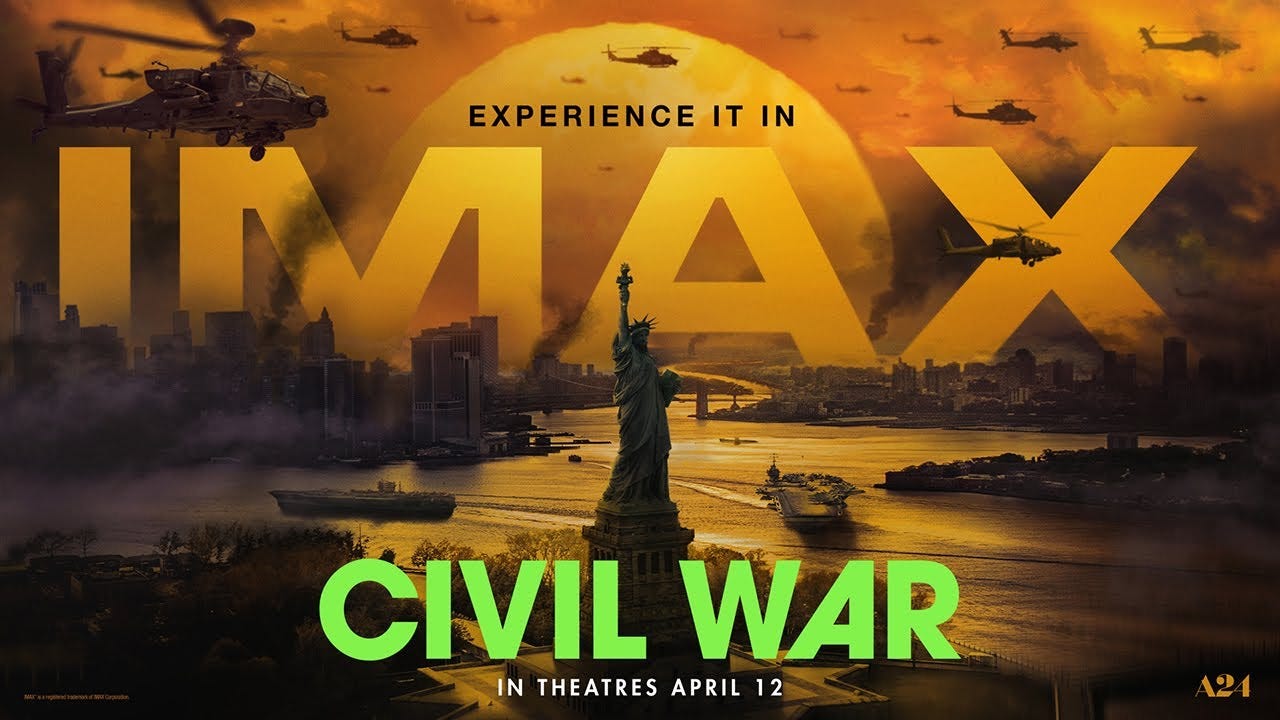The IMAX Shortage: How the Lack of Premium Theaters Hurts Audiences
Premium formats like IMAX and Dolby drive ticket sales, but most theaters only have one — or none at all. That’s a problem.
Sinners is one of the most culturally engaging movie events since the Oppenheimer and Barbie phenomenon of 2023. Word of mouth, excellent reviews, and the promise of a once-in-a-lifetime experience for those lucky enough to catch it in 70mm IMAX have driven a ton of interest in this original horror film from director Ryan Coogler. So much so that it only dropped 5% at the box office in its second weekend — a number most filmmakers can only dream about.
But that run is about to end, because IMAX screens are all being taken over by Thunderbolts, the new Marvel movie opening May 2nd. Every IMAX screen in my area has already shifted from Sinners to Thunderbolts, even as Sinners continues to generate buzz and sell tickets. I’m finally seeing Sinners in its third weekend, and I no longer have any IMAX options. I know, I’m late, but if anyone wants to babysit my two toddlers for free, let me know. I’d get out to the movies a lot faster (and cheaper) that way. This isn’t a knock on Marvel movies or big tentpole franchise releases of any kind. Theaters have to go with the biggest seller, and Thunderbolts will almost certainly be the biggest ticket seller, at least on it’s opening weekend.

But this switch raises a point I’ve been thinking about for a while: with theaters struggling, the limited availability of premium screens — combined with shortened theatrical windows — means that unless you see a film in the first two weeks, you're probably not getting the best experience. Word-of-mouth success is harder than ever, especially when multiple movies are competing for the same limited number of premium screens. IMAX screens are quickly booked for the next big release, and there’s already a massive shortage of large-format screens in the U.S.
When movie theaters were selling tickets like wildfire in the 1990s and early 2000s, many theaters opted for more screens instead of better ones, but that formula isn’t working anymore. These multiplexes have 20 screens, but on any given night, more than half of them sit empty. Instead of one IMAX or Dolby Cinema screen and 19 “standard” screens, why not consolidate? Build a theater with five IMAX or Dolby screens and five smaller standard ones. Focus on the experiences that actually drive audiences to theaters. Quality over quantity.
I distinctly remember seeing A24’s Civil War in its third weekend and being lucky enough to find an IMAX screening still playing. The theater was three-quarters full on a weeknight. The next night, I saw a brand-new release on a standard screen and sat in a nearly empty auditorium. Maybe it was just the movie, or maybe it was a fluke, but nearly every time I go into a large-format theater, I see people buying tickets. In standard theaters? Lots of empty seats.
Theaters have been slow to upgrade over the past two decades, and it’s catching up to them. Standard screens just aren’t enough anymore — not in an age where films like Oppenheimer and Sinners demand a premium experience and deliver ticket sales when given the chance. A recent film like Warfare deserved to be seen (and heard) in Dolby or IMAX, but in many markets, it only got a single night in IMAX. That’s wild, especially when you consider that a 120" screen and 7.1 surround sound in someone’s basement isn't the luxury it used to be. Home theaters have caught up. Theaters need to offer something beyond what we can get at home — and that’s where IMAX, Dolby, and other large-format options need to shine.
This applies to repertory screenings and re-releases too, something I’m especially passionate about as a way to help theaters survive. How many nights can a re-release get in IMAX before it gets bumped for the next tentpole? It’s a fast turnaround — but it doesn’t have to be. We need more theaters capable of projecting 70mm. We need more IMAX screens, not more 50-seat standard auditoriums playing to no one.

This may sound like a mind-blowing number in the age of technology and upgraded experiences across all facets of life, but there were only 15 theaters in the entire United States that were showing Sinners in its full 1.43 format. Just 7 of those theaters were showing the 70mm reel, and the other 8 were showing the full 1.43 presentation with IMAX GT Laser technology. When Oppenheimer released, there were only 19 theaters in the US which were showing the film in 70mm. So while you might see a ton of marketing surrounding 70mm experiences and full IMAX presentations, the reality is that it is almost impossible for 99% of the country to actually see movies in these formats, which is a damn shame.
Now, I’ll admit: I don’t know the cost of licensing or upgrading to IMAX. I’m sure it’s expensive. IMAX also takes a cut of each ticket sold in their format. But maybe it’s time for IMAX to get a little more flexible. IMAX needs to work with theaters to build out more screens at better price points, and to collaborate with filmmakers to make IMAX camera equipment more accessible and affordable. I’d love to see more films shot in large format, but the financial barrier is real. Of course it doesn’t make sense for every movie, but it makes sense for a lot more movies than the current economics allow.

IMAX only survives if movie theaters survive. And while we’ve seen a recent uptick in ticket sales, the industry isn’t thriving yet — it’s still surviving. But large-format screens can bring back the excitement that’s been missing. You see it with Sinners. You saw it with Oppenheimer. People were excited. They were fighting for sold-out IMAX screenings. That level of energy just doesn’t happen with standard showings anymore.
So give me more IMAX. More Dolby Cinema. More DLX or whatever each chain wants to brand their large-format screens. Invest in quality over quantity. Let a film like Sinners stretch its legs and benefit from its well-earned word-of-mouth buzz beyond week two. Stop making films compete so fiercely for these few premium screens. Open things up — not just for new releases, but for repertory runs too. Make large-format more accessible for filmmakers, theater owners, and studios alike. Everyone stands to benefit from that shift.
So what do you think? Would more IMAX and premium format screens get you to the theater more often? Do you often find yourself missing movies in the format you’d like to see them in because they cycle out too quickly? Sound off in the comments!



Totally agree, Jeff. I've invested a lot of money in my home theater and 4K discs. Standard theater screens don't always compete with that, or at least not enough to put up with the drawbacks that accompany going to the theater. But Dolby Cinema and IMAX? That's still special.
To your point, in Chicago, Sinners only played for 7 days on AMC's Dolby Cinema screen. (Currently, there's only one in the city proper.) So, this past Wednesday was my last chance, just after opening weekend, to still see Sinners on that screen. I made the sacrifice and did so on a weeknight. But it sucked to only have a 7-day window. (It got bumped last Thursday for The Accountant 2.)
I would love more Dolby Cinema and IMAX screens. That's a great idea. And had Revenge of the Sith been playing on one of those, I would've gone.
Great article! I couldn't agree more that people have taken the standard theatrical experience for granted. Having a 5.1 surround sound system at home (or better) does compare, so yes, theatres need more. And because of sound bars, it's easier and cheaper to have a surround sound setup than it ever was before!